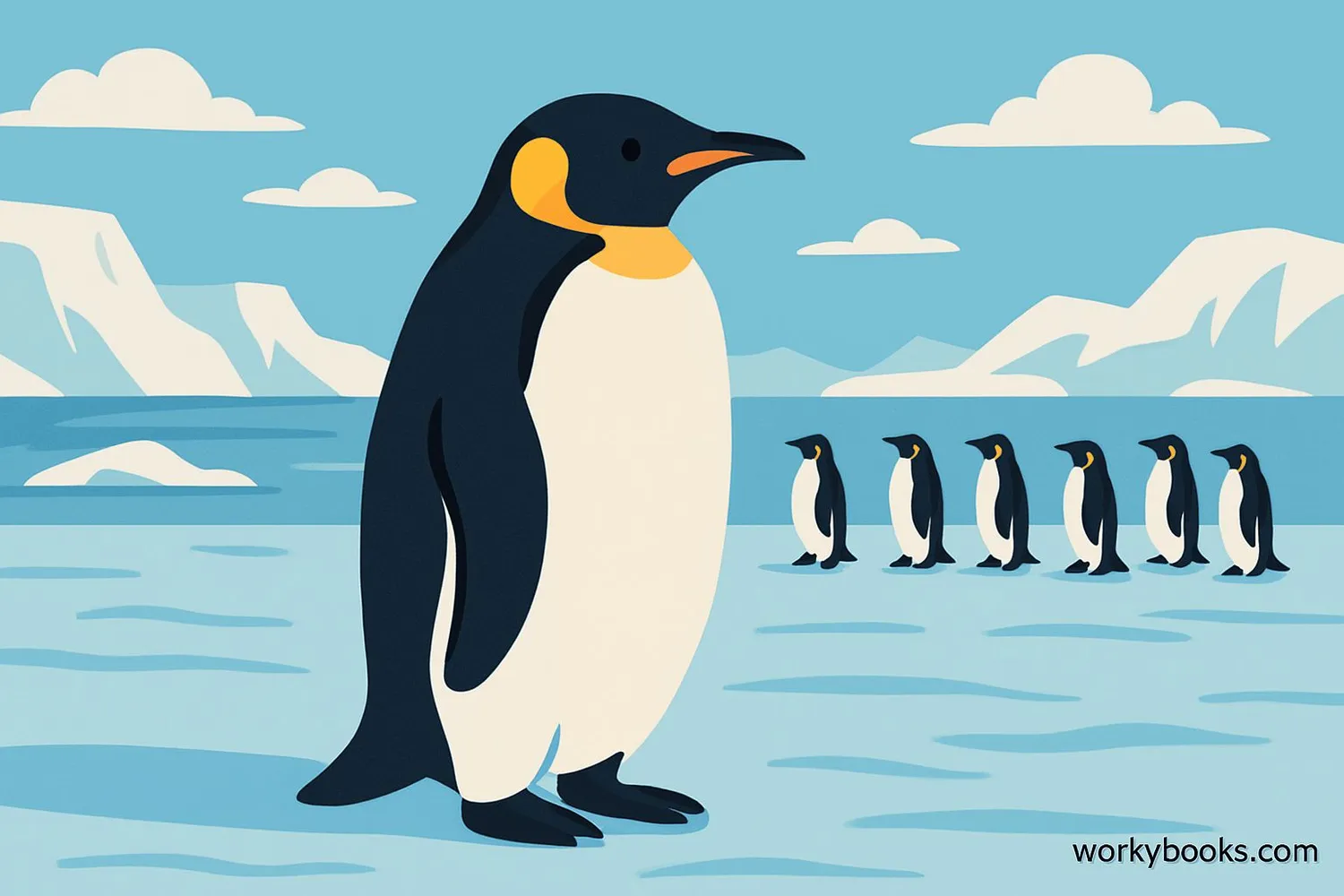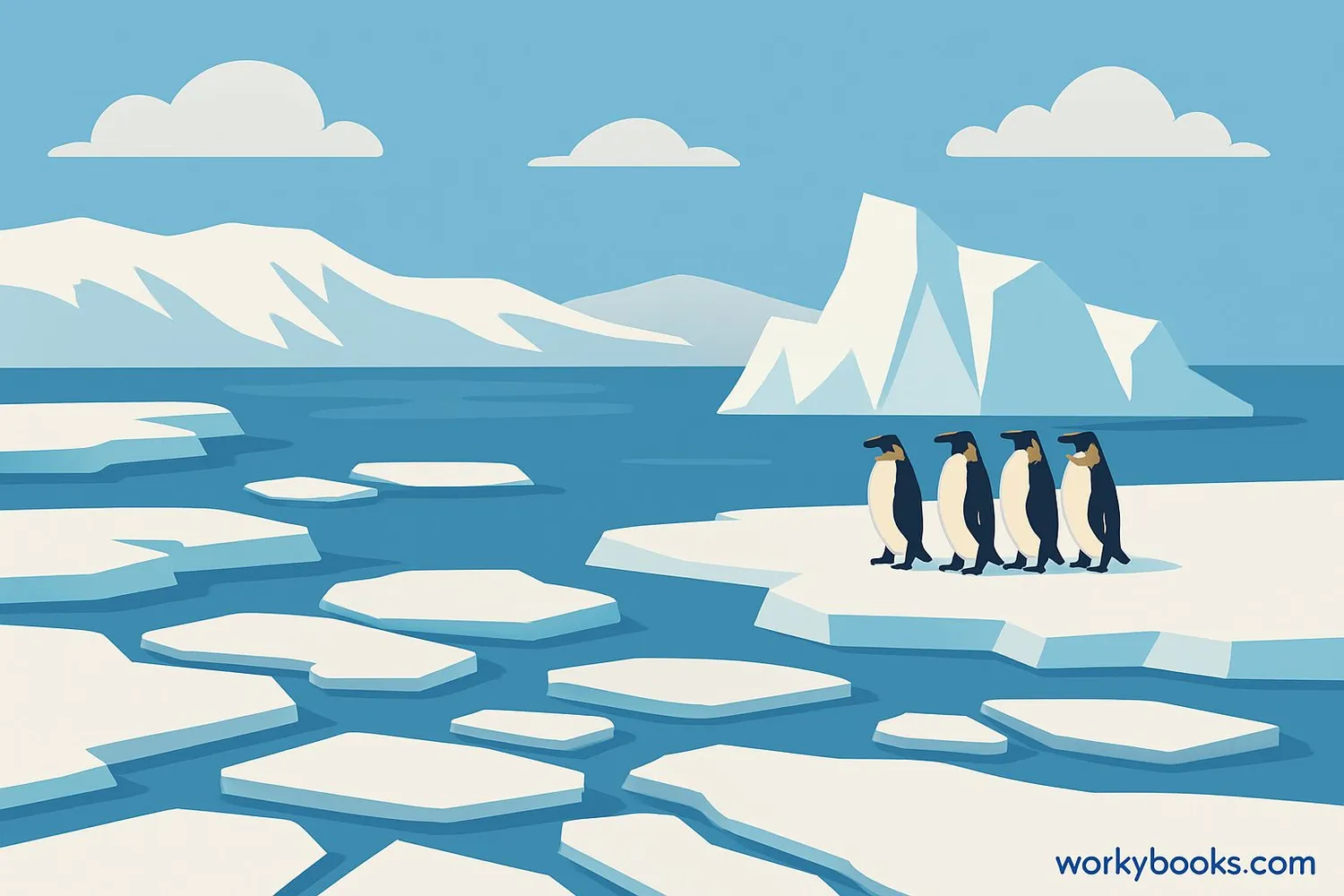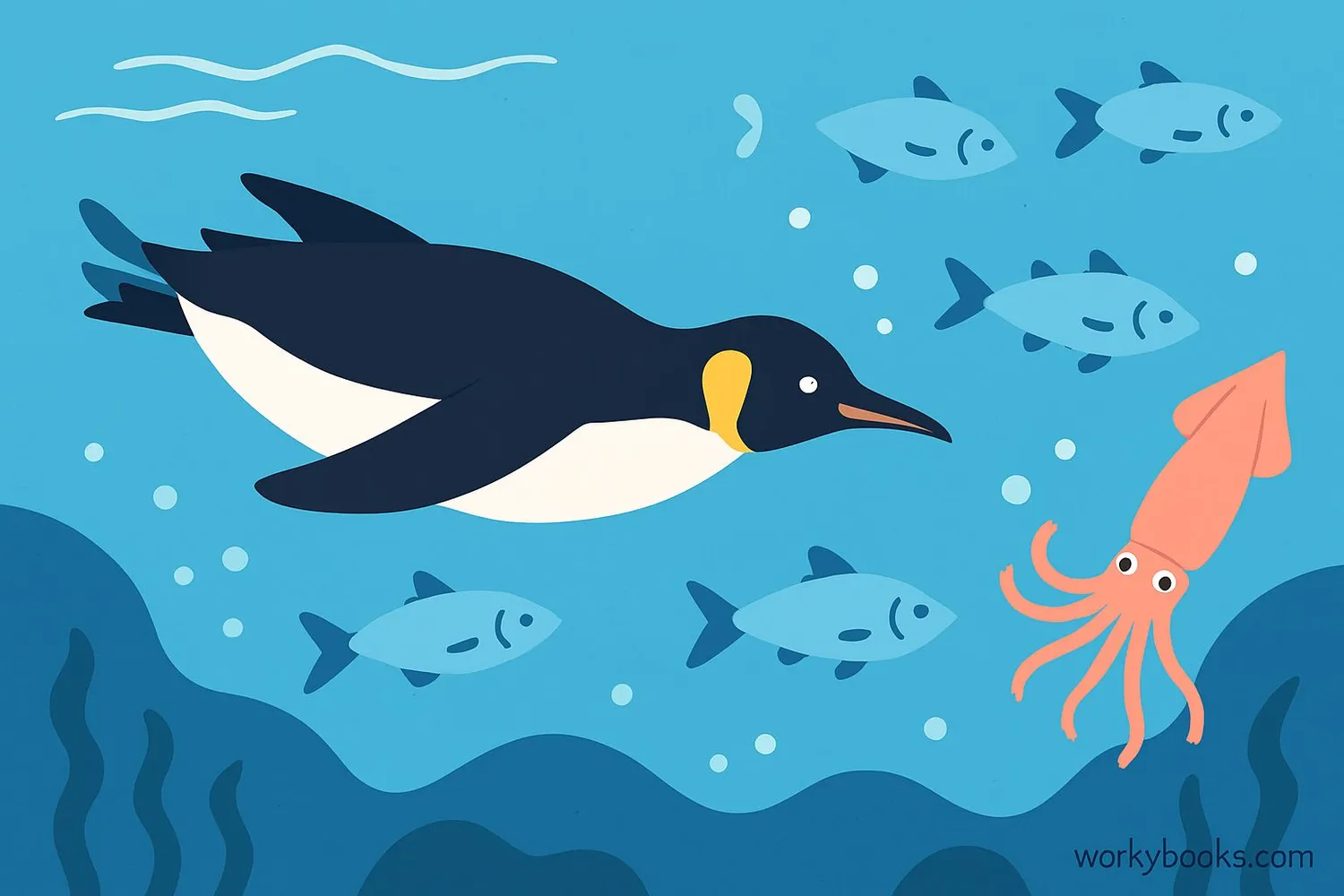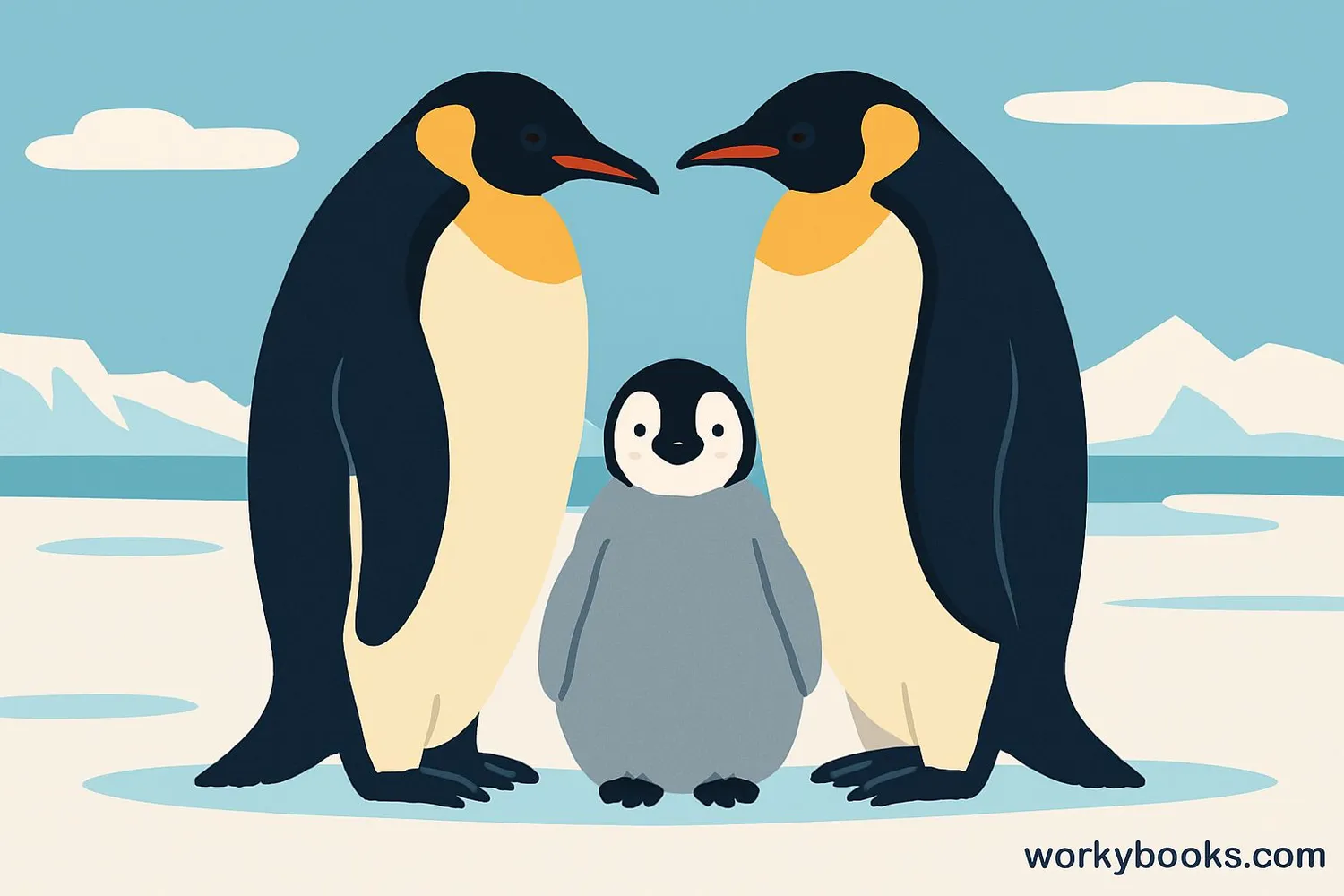Emperor Penguin - Definition, Examples, Quiz, FAQ, Trivia
The Majestic Giants of Antarctica
What is an Emperor Penguin?

The Emperor Penguin is the largest penguin species in the world. These amazing birds live only in Antarctica, the coldest place on Earth. Emperor Penguins are flightless birds that have adapted perfectly to their icy home.
Penguin Fact!
Emperor Penguins are the only penguins that breed during the harsh Antarctic winter, when temperatures can drop to -60°C (-76°F)!
Emperor Penguin Habitat

Emperor Penguins live exclusively in Antarctica, the southernmost continent. They spend their entire lives on the sea ice and in the cold waters of the Southern Ocean.
Sea Ice Dependence
They rely on stable sea ice for breeding and raising their chicks
Ocean Feeding
Spend much of their time hunting in the cold Antarctic waters
Harsh Conditions
Survive temperatures as low as -60°C and winds of 200 km/h
Climate Impact
Emperor Penguins are threatened by climate change because they depend on stable sea ice for breeding. Scientists estimate their population could decline by over 50% by 2100 if sea ice continues to diminish.
Emperor Penguin Diet

Emperor Penguins are expert hunters in the ocean. Their diet mainly consists of:
Fish
Antarctic silverfish make up a large part of their diet
Krill
Small shrimp-like creatures abundant in Antarctic waters
Squid
Various squid species found in the Southern Ocean
Emperor Penguins are incredible divers. They can:
• Dive deeper than 500 meters (1,640 feet)
• Hold their breath for up to 22 minutes
• Swim at speeds of 6-9 km/h (4-6 mph)
Emperor Penguin Breeding

Emperor Penguins have one of the most remarkable breeding cycles in the animal kingdom:
March-April
Penguins march inland to breeding colonies
May-June
Females lay a single egg and transfer it to the male
Winter
Males incubate the egg for 65-75 days in extreme cold
Spring
Chicks hatch and both parents care for them
Summer
Chicks fledge and head to sea
During the harsh Antarctic winter, male Emperor Penguins form large huddles to conserve heat. They take turns moving to the warmer center of the huddle while balancing their eggs on their feet under a special brood pouch.
Emperor Penguin Adaptations

Emperor Penguins have incredible physical and behavioral adaptations that allow them to survive in the extreme Antarctic environment:
Feathers
Four layers of scale-like feathers that are waterproof and windproof
Blubber
Thick layer of fat for insulation and energy storage
Blood Circulation
Special heat exchange system in flippers and feet prevents heat loss
Huddling
Group huddles reduce heat loss by up to 50%
Their bodies are perfectly streamlined for swimming, with flippers that work like powerful wings underwater. Emperor Penguins also have solid bones (unlike flying birds which have hollow bones) which helps them dive to great depths.
Emperor Penguin Quiz
Test your Emperor Penguin knowledge with this fun quiz! Answer all 5 questions to see how much you've learned.
Frequently Asked Questions
Here are answers to some common questions about Emperor Penguins:
Amazing Emperor Penguin Trivia
Discover some fascinating facts about these incredible Antarctic birds:
Deep Divers
Emperor Penguins can dive deeper than any other bird - over 500 meters (1,640 feet)! That's deeper than the Empire State Building is tall!
Speedy Swimmers
While they waddle awkwardly on land, Emperor Penguins are graceful and fast in water, reaching speeds of 6-9 km/h (4-6 mph). They can leap high out of the water like dolphins!
Extreme Survivors
Emperor Penguins endure the harshest weather conditions on Earth - temperatures as low as -60°C (-76°F) and winds up to 200 km/h (124 mph) during the Antarctic winter.
Unique Voices
Each Emperor Penguin has a unique call that allows parents and chicks to recognize each other among thousands of penguins in a breeding colony.


